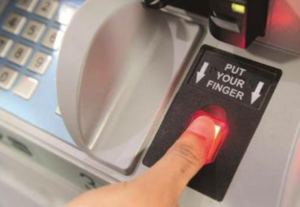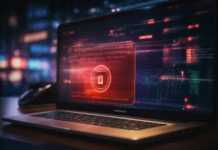
What is biometric data?
A general term used to refer to any computer data that is created during a biometric process. This includes samples, models, fingerprints, similarity scores and all verification or identification data.
What is Biometric Authentication?
Biometric authentication is a security process that relies on the unique biological characteristics of an individual to verify that he is who is says he is. Biometric authentication systems compare a biometric data capture to stored, confirmed authentic data in a database. If both samples of the biometric data match, authentication is confirmed. Typically, biometric authentication is used to manage access to physical and digital resources such as buildings, rooms and computing devices.
Behavioral Patterns:
The most common are voice recognition, signature dynamics (speed of movement of pen, accelerations, pressure exerted, inclination), keystroke dynamics, the way objects are used, gait, the sound of steps, gestures, etc.
The different techniques used are the subject of ongoing research and development, and, of course, are being constantly improved.
Several Technologies implied are:
Iris recognition: It is used to identify individuals based on unique patterns within the ring-shaped region surrounding the pupil of the eye. The hardware is expensive and specialized, and using it is slow and inconvenient and may make users uneasy.
Finger scanning: Everyone knows fingerprints are unique. They are also readily accessible and require little physical space either for the reading hardware or the stored data. the digital version of the ink-and-paper fingerprinting process, works with details in the pattern of raised areas and branches in a human finger image.
Finger vein ID: is based on the unique vascular pattern in an individual’s finger. We’re used to fingerprints but seldom think of an entire hand as an individual identifier. This method relies on devices that measure the length and angles of individual fingers. Although more user-friendly than retinal scans, it’s still cumbersome.
Facial recognition: systems work with numeric codes called face prints, which identify 80 nodal points on a human face. Use distinctive facial features, including upper outlines of eye sockets, areas around cheekbones, the sides of the mouth and the location of the nose and eyes. Most technologies avoid areas of the face near the hairline so that hairstyle changes won’t affect recognition.
Voice identification: systems rely on characteristics created by the shape of the speaker’s mouth and throat, rather than more variable conditions. This is different from speech recognition. The idea is to verify the individual speaker against a stored voice pattern, not to understand what is being said.
A view in Biometric Authentication’s history:
Biometrics addresses a longstanding concern to be able to prove one’s identity, irrefutably, by making use of what makes one different.
Going as far back as prehistoric times, man already had a feeling that certain characteristics such as the trace of his finger were sufficient to identify him, and he “signed” with his finger.
In the second century B.C., the Chinese emperor Ts’In She was already authenticating certain seals with a fingerprint.
In the 19th century, Bertillon took the first steps in scientific policing. He used measurements taken of certain anatomical characteristics to identify reoffending criminals, a technique which often proved successful, though without offering any real guarantee of reliability.
This budding use of biometrics was then somewhat forgotten, only to be rediscovered by William James Herschel, a British officer, to be used for an entirely different purpose. Having been put in charge of building roads in Bengal, he had his subcontractors sign contracts with their fingerprints. An early form of biometric authentication and a sure way of being able to find them more easily if they defaulted…
- In the UK, the Metropolitan Police started the use of biometrics for identification in 1901.
- In the US, it was initiated by the New York police in 1902 and by the FBI in 1924.
- The French police started to initiate the same process in late 1902.
This is the basic principle of biometrics: to identify a person based on certain unique characteristics.
Conclusion:
Because of its convenience and ease of use, fingerprint authentication is becoming the biometric technology of widest choice. A growing number of notebook PCs and computer peripherals are coming to market with built-in fingerprint readers. Scores of products are available, including keyboards, mice, external hard drives, USB flash drives and readers built into PC card and USB plug-in devices. Most of these units are relatively inexpensive.
These devices allow the user to maintain encrypted passwords that don’t need to be remembered but instead are invoked after the user puts his finger on the reader. This can also be used with a separate PIN or password to offer true two-factor authentication.

















